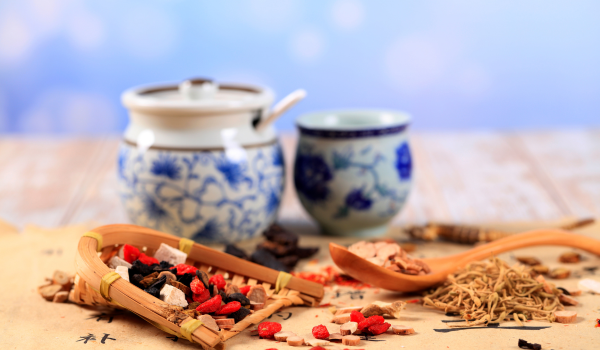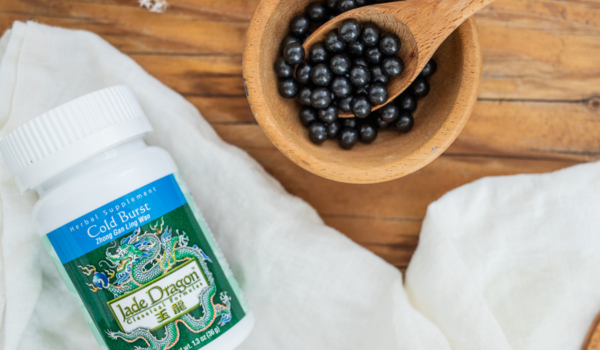If you learned that a botanical from another healing system—like Ayurveda, Western herbalism, or traditional Chinese medicine (TCM)—could expand your offerings and help your clients feel even better, would you learn how to use it?
There’s an ever-growing number of practitioners blending Western and Eastern botanicals in the United States, and consumers in the West are becoming more interested in exploring Eastern methods.
By learning to use complementary herbs from other healing modalities, you can expand your offerings, create more effective formulas, and build a more sustainable practice. However, working with botanicals outside your framework can be tricky at first, so here are some tips for getting started in the right direction.
A Difference in Paradigms
Traditional Chinese medicine is rooted in energy and based on qi (life force) and yin-yang (opposing interconnected forces). Chinese herbal practitioners base their recommendations around these concepts and use plants and lifestyle adjustments to bring energies back into balance.
From the beginning of TCM, practitioners have viewed patient’s health holistically—understanding that an individual’s constitution and conditions are related and require a personalized approach.
Western herbalism varies from TCM in cultural perspectives and local botanicals. In the West, practitioners tend to:
- Work with individual herbs or “simples” rather than formulas
- Focus on active constituent qualities
- Take a more symptom-focused approach (although many Western herbalism subsets have adopted a more holistic approach in recent years)
When blending new botanicals into your practice, one of the biggest struggles is aligning these different paradigms. However, as you’ll come to see, it’s well worth the effort!

3 Benefits of Blending Eastern & Western Herbs
One of the main benefits of using botanicals from other modalities is that you’ll expand your materia medica and the number of herbs you can call upon in any instance.
For example, while a TCM formula may address an underlying imbalance, adding a Western botanical may support specific issues that arise from this imbalance, encouraging greater holistic health.
As we hinted at earlier, the main challenge here is that practitioners must learn how a botanical from one modality can translate to another. TCM practitioners will have to learn the energetics of Western botanicals, how they apply to various organ systems, and how they affect qi. Western herbalists will need to learn the beneficial constituents and properties of TCM herbs.
Fortunately, some practitioners have already begun this process and have documented their findings in research journals and reference books. In Dr. Thomas Avery Garran’s extensive materia medica, Western Herbs According to Traditional Chinese Medicine, he shares monographs for Western herbs using TCM methodology.
For example, in his monograph for globe artichoke (Cynara scolymus), he mentions that it enters through the gallbladder, liver, and stomach channels and helps clear heat and transform dampness (a TCM approach).
An additional section for “botanical actions” pulls in the beneficial constituents of the plant in a way that Western herbalists would recognize, labeling the plant as anticholestatic, antiemetic, diuretic, and more.
This is exactly the sort of reference material that will help practitioners bridge the gap between different modalities. Checkout our practitioner resources for more examples and plant profiles.

Potential for Greater Client Compliance
A study by the Mayo Clinic in the National Library of Medicine shares that one of the reasons patients don’t take their medications is because of communication barriers and a lack of understanding. If you’re a TCM practitioner based in the United States—and you’ve noticed an issue with client compliance— it may help to share a formulation or botanical that your Western clients recognize.
Vice versa, if you’re a Western herbalist with a client who’s more accustomed to TCM, then you may see greater compliance if you share herbs and formulas that the patient is familiar with. If a practice setting is new for a patient, using a botanical they recognize may provide comfort and further the trust between patient and practitioner, which is always a good thing!
A More Sustainable Practice
Understandably, most practitioners favor botanicals that are part of their learned framework.
In general, acupuncturists and TCM practitioners turn to botanicals native to China, where their healing modalities have the deepest roots.
On the other hand, Western herbalists are more likely to call upon botanicals that are either native to North America or that English herbalists used when creating the early framework of Western herbalism. Of course, exceptions exist, but history shows us that healing modalities first began with the plants of that region.
However, as global trade expands and scientific studies confirm the safety and efficacy of herbs worldwide, practitioners have more options than ever before.
If one of the botanicals you use in your practice is at-risk of being overharvested or becoming endangered, then you can explore a more sustainable alternative from another modality.
Furthermore, sourcing botanicals locally will encourage stronger ties in your community and may help build lasting relationships with farmers and growers. Known as “bioregional herbalism,” working with locally available plants also reduces the energy and packaging it takes to ship botanicals worldwide, lowering your practice's environmental impact.
Beyond these benefits, sourcing your herbs sustainably may also help you weather supply chain and climate change issues if or when they arise.
For more on this topic, see:
- Responsible Herbal Sourcing at Nuherbs
- Climate Change and Building a Sustainable Supply Chain
- Conservation, Preservation, EST, and the Work of FairWild
Enhance Your Practice with Complementary Botanicals
Learning how to use botanicals from other frameworks can help you grow your practice and connect with clients in a whole new way. Who knows, you may even learn a better way to create a formula or meet a local herb farmer who shares your sustainable values!
Start small when learning about botanicals from a different perspective so you can source them appropriately and gradually weave them into your practice. Finally, don’t be afraid to (safely) experiment. Trying new things and continuing your herbal education is a great way to keep things fresh and evolve your practice for years to come.
In order to learn more, we also recommend the following online classes that provide you with CEUs.
- Five Flavors Herbs - Classes On TCM and Western Herbalism
- Pacific Rim College - Classes and Degrees
- Center for Herbal Studies - Classes with David Winston
- Coursera - University of Minnesota - Introduction to Herbalism
- Coursera - The Chinese University of Hong Kong - Everyday Chinese Medicine
These statements have not been evaluated by the Food and Drug Administration. Our product and website content are not intended to diagnose, treat, cure, or prevent any disease.

